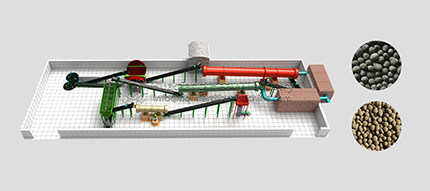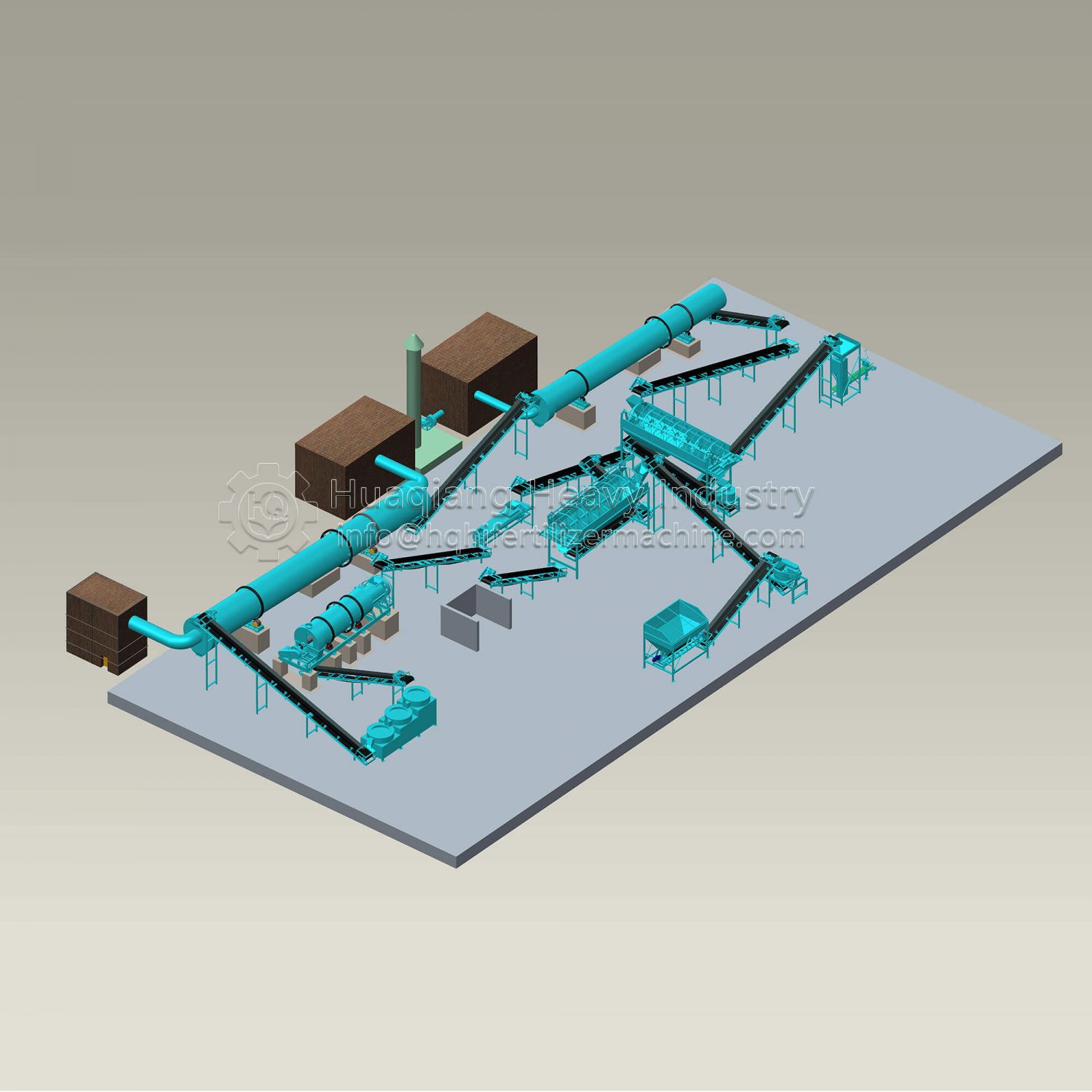hicken dung can be used as organic fertilizer in three ways: directly as organic fertilizer after drying, or as raw material for organic-inorganic compound fertilizer production. It can be fermented by compost, or it can be fermented by biogas and then mixed with other organic materials for compost fermentation, and then directly used as organic fertilizer or as raw materials for other organic fertilizers.
- The chicken manureorganic fertilizer equipmentdoes not contain any chemical components. Due to the poor digestion ability of the chicken, only 25% of the nutrient components can be consumed, while the other 75% of the nutrient components in the feed are discharged with the manure, so that the dry product contains nitrogen, phosphorus, potassium, organic matter, amino acid, protein and other components.
- The main substance in chicken manure is organic matter, which increases the content of organic matter in soil. Organic matter can improve soil physical, chemical and biological properties, ripen the soil, and improve soil fertility. The proverbs of “the ground depends on dung, and the seedlings depend on dung” in rural areas of China, to a large extent, reflect the role of chicken manure in improving soil.
- Chicken manure not only increases many organic colloids, but also decomposes and converts many organic substances into organic colloids through the action of microorganisms, which greatly increases the adsorption surface of the soil, and produces a lot of sticky substances, making the soil particles cemented into stable aggregate structure, improving the performance of soil water conservation, fertilizer conservation and air permeability, as well as the ability to regulate soil temperature.
- Chicken manure can also make the microorganisms in the soil multiply, especially many beneficial microorganisms, such as nitrogen-fixing bacteria, ammonifying bacteria, cellulose decomposing bacteria, nitrifying bacteria, etc. There are various active enzymes secreted by the digestive tract of animals and various enzymes produced by microorganisms in chicken dung. After these substances are applied to the soil, the enzyme activity of the soil can be greatly improved.
The reason that many organisations will build a complete organic production plant is caused by the sheer number of manure that they could collect in the animals on their own property. You can find farms who have hundreds and hundreds of chickens, and similar amounts of cows, all of which are producing waste materials daily. Rather than letting this simply enter in the ground through natural decomposition and percolation processes, you are able to collect it, process it, and store it for future use. This is certainly all done inside of that plant that will possess the machinery necessary to do these kinds of conversions.




